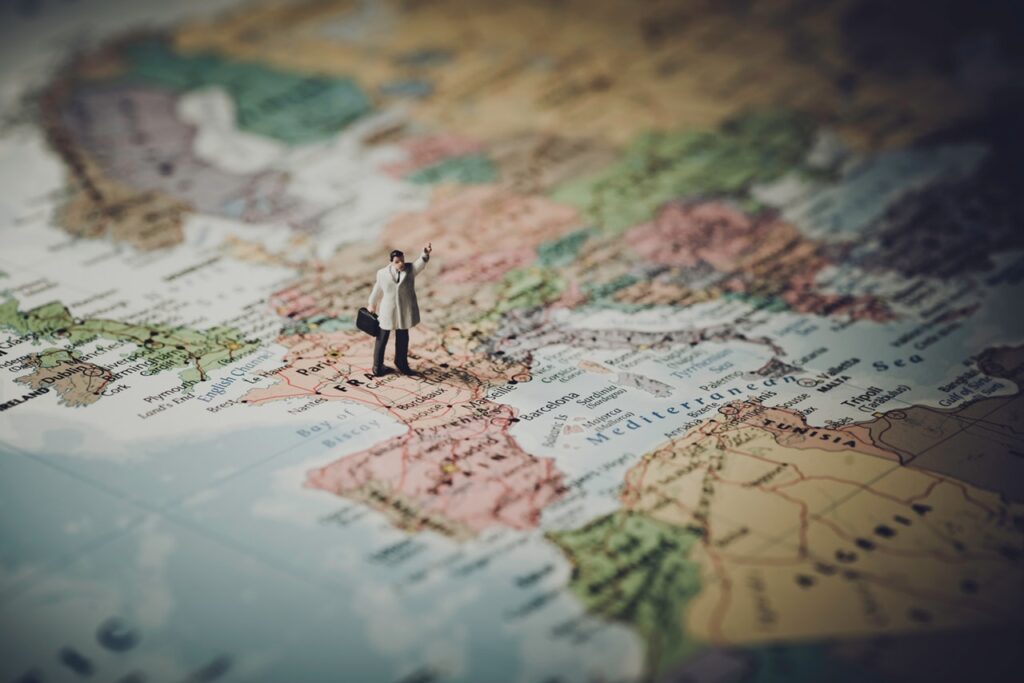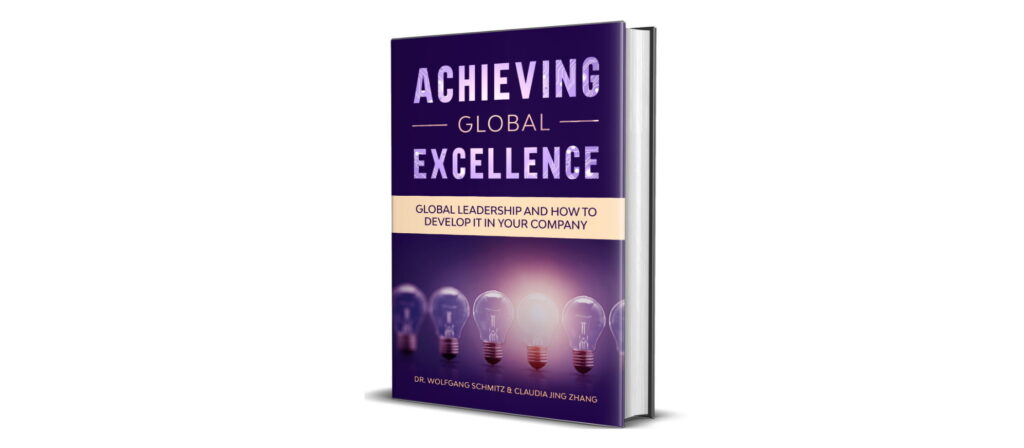In recent years, global leadership has been construed to mean so many things. As a result, its definition means different things to different people, depending on the context. This has made defining global leadership a rather complex task. Our view of the world has changed and our view of what global leadership is had to expand, given the challenges of globalisation and our changing expectations of how good leadership should be defined.
Leadership in and of itself is a phenomenon mankind has studied for generations; how does someone go about influencing others? How is it that some people are more effective than others at getting a group of people to unite behind a common goal? These questions have given rise to all different manners and modes of study. But when we combine the two words to form the term global leadership, it raises a whole raft of connotations that have so far been floating in a formless cloud.
So what is global leadership? How has it been defined so far? What is the most comprehensive definition and why does it differ from the definitions that have gone before?
We interviewed Joyce Osland to discuss this. But first…a little context.
How Global Leadership has been understood so far
Prior to the work of Mark Mendenhall, Sebastian Reiche, Allan Bird and Joyce Osland, there were a range of definitions for global leadership.
Existing Definitions — State Vs. Process
Historically, definitions of global leadership fell into two categories, depending on whether leadership was viewed as a state or as a process.
The ‘State’ Definition
State leadership definitions operate on the premise that there are particular roles, activities and job responsibilities that can only be fulfilled by global leaders. In short, your tasks, which will have some global elements
Under this umbrella, the academic theories about what constitutes global leadership have been as vague as “Any job that has an international scope…” (Spreitzer et al.), and have varying degrees of detail from that point onwards.
It isn’t incorrect; global leadership manifests itself into specific task goals and actions. But to reduce global leadership to just tasks with a bit of international scope doesn’t tell the whole story.
The ‘Process’ Definition
“It’s not just about the title, you have to earn it, you have to be it, you have to enact it.”
Joyce Osland
Process leadership definitions operate on the premise that global leadership is so much more than tasks and job responsibilities. It’s a state of being that drives how those roles and responsibilities are fulfilled. This definition takes into account the hugely important relational aspect of management and includes an emphasis on how global leaders influence their teams.
Thinkers in the global leadership space like Nancy Adler came up with a pretty decent definition for this category.
“. [it] can be described as ‘‘a process by which members of the world community are empowered to work together synergistically toward a common vision and common goals resulting in an improvement in the quality of life on and for the planet.’’
Here we see the definitions recognising the unique position that global leaders are in. In order to be effective, they have to weave together many different factors so visions can be realised and objectives can be met.
But again; it still didn’t give us the whole picture or a solid framework for us to differentiate which leaders fall into this category.
Could it be the Best of Both?
Naturally the process evolved to include definitions that combined both theories.
“Global leadership is the processes and actions through which an individual influences a range of internal and external constituents from multiple national cultures and jurisdictions in a context characterized by significant levels of task and relationship complexity.” — (Mendenhall, Osland, Bird, Oddou, and Maznevski)
This and other definitions moved us closer to a more comprehensive description of Global Leadership. This was the starting point of the global leadership framework as it stands today.

Defining the ‘Global’ in Global Leadership
So, how did Mark Mendenhall and his team go about building this framework?
The first challenge they tackled was to understand what we really mean when we add the word ‘global’ to a leadership definition. Is it about managing across different geographical regions? Is it about managing different cultures across the world? These are important questions to ask because it helps to define the parameters about how the term should be applied to various contexts of leadership.
Historically, adding the word ‘global’ has been a result of the widely used term ‘globalization’ which is primarily a business term we use to describe the increased interconnection of countries as businesses expand to become multinational corporations. This effectively meant that as a title, global leadership could be applied to any business management practice that spanned across different countries.
Such an ambiguous and formless definition of the word ‘global’ causes problems when defining ‘global leadership’. Firstly, as a term, it will mean different things to different people. Without a clear case for what it means, people will apply it as and when they see fit, which could potentially dilute its importance over time.
Secondly, a vague definition doesn’t allow an adequate framework that will account for the levels of complexity that global leaders face depending on their goals and their responsibilities.
Mendenhall et al. notes that someone who has to travel to one country to represent an organisation in a 3 – 5 year posting will have an entirely different set of challenges than the manager who is covering the integration of organisational practice across 15 different countries. A loose definition of the term doesn’t reflect that this is the case; expatriation to a new nation to manage within a business context or any other applicable context is less about global leadership, and in this instance could be closer to a more domestic management definition.
So what makes leadership ‘global’?
“Global Leaders aren’t just anybody. Our definition is not just expatriates or any old global managers…” — Joyce Osland
In an attempt to define it, Mendenhall et al in the article “Defining the ‘global’ in Global Leadership” suggested that determining whether a type of leadership should be classed as ‘global’ rests on three interconnected dimensions. Those dimensions are;
- Complexity
- Flow
- Presence
These three dimensions are discussed in detail in the article but a quick summary of each is prudent to move closer to defining global leadership. Let’s look at each one in turn.
Complexity — The Context Dimension
“The main difference between domestic and global leadership is the complexity of the context in which they work.” - Joyce Osland
Global leadership comes with varying layers of complexity that domestic leadership does not necessarily have to consider. The complexity of global leadership is further broken down into four main challenges; multiplicity, interdependence, ambiguity and flux.
Multiplicity refers to the fact that global leadership roles will unequivocally flag up a multiplicity of customer needs, employee work practices and opposing views on how a goal should be reached. Global leaders must balance all of these different areas feeding into their tasks.
Interdependence refers to the fact that isolation in terms of ideas, people and resources are a thing of the past as we live in a world where people are increasingly interconnected. This adds another layer of complexity because when you make changes as a global leader, the ripple effects are even greater. When a decision is made, it affects a delicately balanced ecosystem as opposed to one team, one employee or one project.
Ambiguity is a complexity layer that arises from the fact that all these different factors produce huge amounts of data and options. The higher the diversity of cultures and ideas, the more patterns there are to draw and the less effective the data becomes at revealing a clear path. Global leaders can never be completely sure that what they plan to implement will work in the way they intended and the data is sometimes unable to back up their decisions definitively.
Flux is the part of the complexity framework that accounts for the fact that global leaders remain in a constant state of change. The situations they find themselves in may never present in the same way twice. It is a challenge in itself to answer the ever-fluid and nuanced demands that are an inherent part of global leadership.

Flow — The Relational Dimension
In this dimension, Mendenhall et al. note that global leaders must master the art of moving seamlessly across relational boundaries like language, culture, education and religion to accurately allocate organizational resources and achieve the necessary objectives.
This is a very delicate skillset; taking all of these different factors into account goes far beyond the duties one can expect in domestic management. Essentially, global leaders operating in this dimension aim to remove obstacles that stop the flow of information, ideas, and resources. Breaking down barriers is a huge feature of global leadership and it is not easy to achieve.
It requires a high level of adaptability, empathy, understanding, and a healthy respect for diversity and the part it plays in how people relate to one another.
Presence — The Physical Dimension
The official subtitle of this dimension is the spatial-temporal dimension and it refers to the level of physical movement a global leader is required to do in their roles. Some global leaders travel a great deal to ensure that they can adequately meet with and build relationships with stakeholders.
Some global leaders can fulfill the duties of their role without being physically present. Increasingly we see startups build leadership models using completely remote teams and yet everybody is united by the purposes of the organization. Physical presence is therefore optional. But there are still plenty of instances where a physical presence is required.
A company may send managers to a country where their physical presence is required to build, maintain or implement a program of change because it is not possible to be effective from a distance. This is especially true when it is necessary for the global leader to immerse themselves in a culture that is different from their native culture.
In short, presence is and will remain for the foreseeable future, a part of the global leadership definition.
All of these dimensions come together to form the global leadership framework and help us to understand the most comprehensive definition of global leadership to date.
Global Leaders — Agents of Change
“One thing we had in our definition is that a global leader has to be a change agent.” — Joyce Osland
Joyce Osland and the rest of the team spent over five years off and on putting together a definition that included all types of global leaders and, at the same time, distinguished them from domestic leaders. But ultimately it boils down to this; global leaders are agents of change in an environment characterized by both task and relationship complexity, and they are agents of positive change. They balance factors that are ever fluid and highly challenging.
“To me, global leadership is extreme leadership…just like extreme sports.” — Joyce Osland
This is why global leadership has emerged as a separate entity with a huge scope for discussion in its own right. The definition produced here is different from all others before it because at last, we have some concrete parameters and a firm base to define and therefore better train global leaders to be effective in their roles.
We hope that this introduction to defining global leadership really helps you to understand all the vital roles that form a part of a global leader’s role. If you know what you’re up against and what is required of you, it is so much easier to form a plan of action and target your development to be the best global leader you can be.
If you want to learn more about global leadership on a weekly basis, just sign up for our newsletter here:
This article is based on an interview with Dr. Joyce Osland. What questions do you have now? Contact us and we’ll answer them.


